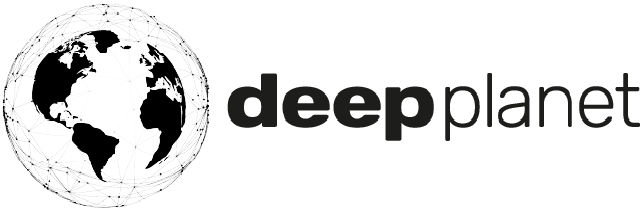Optimise your nutrient application using variable rate application (VRA) maps to maximise yields and reduce costs
Tailoring nutrient application rates optimises crop nutrition, minimising excess fertiliser and reducing environmental impact. This precision approach enhances crop performance while lowering input costs.
Introduction
Variable rate technology is a well-established method within the precision agriculture sector, using data to apply agricultural inputs like fertilisers and pesticides, seeds and planting, and water for irrigation, at different rates across a field. However, Deep Planet provides a unique benefit to growers by generating weekly prescription maps based on our cutting-edge soil nutrients maps detecting nitrogen, potassium, phosphorus soil content using machine learning and satellite imagery. This offering stands out from the current industry standard of NDVI productivity maps which is also provided in our offering.
There are numerous economical and sustainable benefits to using VRA technology which are covered in the article below. Deep Planet’s nutrient application maps are easy-to-use and intuitive, based not only on vegetation productivity indices but also on soil nutrient content data, helping you to customise your fertiliser usage into useful zones and integrating into your preferred application equipment software.
The benefits of using VRA technology
Deep Planet’s Soil Nutrient Maps feature measuring soil nutrient content in g/kg at 10m per pixel resolution (October 2024).
The use of variable rate application (VRA) helps to customise nutrient inputs for crop needs, and is linked to cost savings and resource optimisation. For many growers, VRA maps address the pain points of wasteful over-application of nutrients and prevents fertiliser runoff which may have harmful effects to the soil environment, reducing fertiliser use by up to 60% and pesticide use by up to 80% (Papadopoulos et al., 2024). At the same time, VRA maps help to better understand crop and soil input needs for each field zone, ensuring more consistent crop growth and quality while reducing costs on fertiliser and water. By applying the right amount of resources to the right areas, VRA maps can increase crop yields by up to 62% (Papadopoulos et al., 2024).
To incentivise growers, there are also regional schemes that pay to use variable application rate maps, such as the PRF1: Variable rate application of nutrients scheme under the Sustainable Farming Incentive (SFI) from the UK DEFRA Rural Payments Agency. Therefore, the benefits do not only include cost savings and environmental protection, but public incentives also exist.
Deep Planet’s VRA Maps feature with the user sidebar for index and date selection (November 2024).
Our solution
Deep Planet enables farmers to create variable rate application maps for fertiliser application. Leveraging satellite information and global soil nutrient datasets, we provide weekly application maps based on our unique soil nutrients maps detecting nitrogen, potassium, phosphorus, as well as NDVI. The NDVI application maps are also customisable based on individual needs and infield knowledge such as previous rates of application and product types used.
Deep Planet’s VRA Maps feature using nitrogen soil nutrient maps, with editable fields for zone-specific applications (November 2024).
Deep Planet’s soil nutrient-based application maps for NPK are derived from our proprietary soil nutrient maps. This cutting edge technology uses remote sensing and machine learning technologies to analyse the spatial distribution of soil nutrients in agricultural fields and monitor temporal changes in the content of the main nutrients (NPK) of crop plants. This presents an addition to using NDVI to determine productivity zones as well. The benefits of using our soil-based approach measuring soil nutrient content, which is differentiated from using vegetation indices like NDVI that serve as an indirect indicator of nutrient availability and needs.
How do I use the VRA maps?
While creating a variable rate application map, you can select from numerous indices: Soil nutrient maps for nitrogen, potassium and phosphorus, and NDVI. There is also an option to generate NDVI nutrient application maps using the mean vegetation indices data over a time period, accounting for temporal fluctuations or trends.
As part of Deep Planet’s intuitive product design, the nutrient application zones thresholds are populated by default with regional guideline amounts (such as the AHDB recommendations in the United Kingdom) which you can select. This field is editable and you can modify the application amounts based on previous application rates, fertiliser product types used, and past cumulative application amounts.
The maps are exportable into your preferred format, such as .shp or .kml, in order to integrate into your nutrient application equipment software. We are always expanding the available formats, so if you happen to find that your application format has not been included, please reach out to us!
Final Thoughts
VRA maps offer great advantages to your agricultural production, while reducing costs and promoting environmental responsibility. Using Deep Planet’s industry leading soil nutrients maps and customisable VRA maps that are easily exportable to your input application software, better understanding your input needs and reaping the benefits has never been easier.
If you have any questions or feedback about our soil nutrient maps or VRA maps, please let us know, we would love to hear from you.
To learn more about Deep Planet’s VineSignal platform, please visit our website or contact hello@deepplanet.ai for more information or to arrange a demo.



